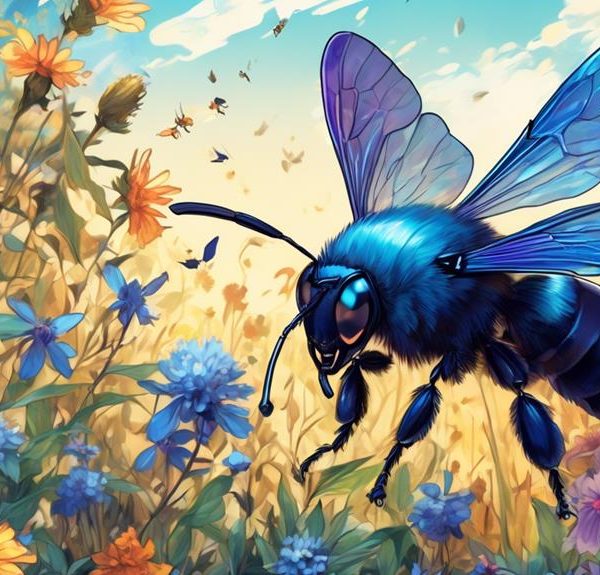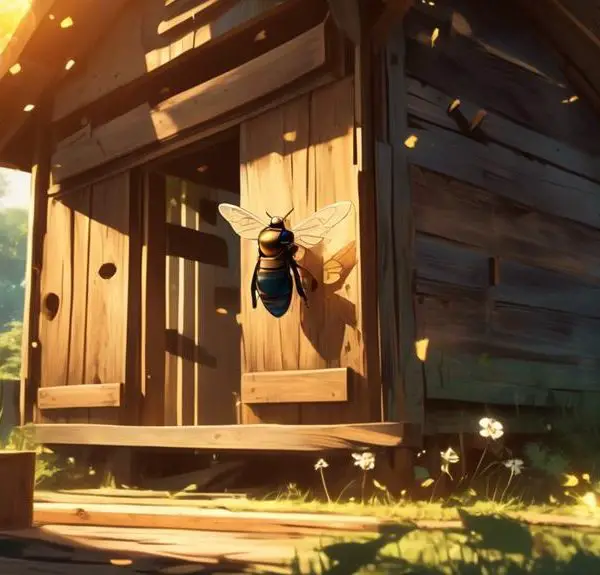Yearning to understand the intriguing world of the Skinny Carpenter Bee? Dive into their unique characteristics and surprising 'carpentry' skills.
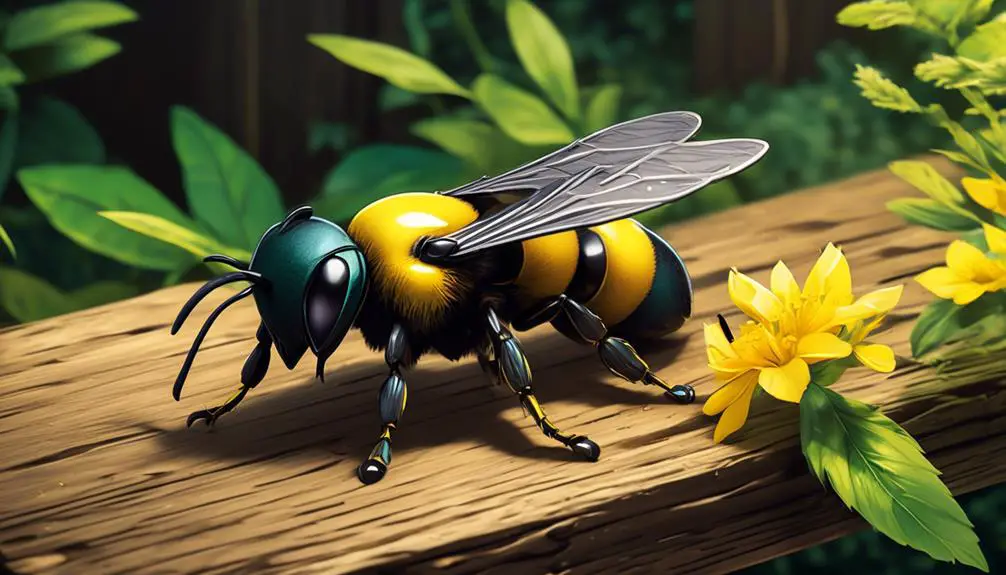
Skinny Carpenter Bee
Imagine you're walking through a blooming garden on a sunny afternoon, and you notice a small, slender insect buzzing around, zipping in and out of the flowers. That's the Skinny Carpenter Bee, a fascinating creature whose size belies its importance.
Have you ever wondered about the incredible creatures that inhabit our world, their unique characteristics and the roles they play in our ecosystem? Well, here's your chance to explore the intriguing life of the Skinny Carpenter Bee, from its distinctive physical features to its role in the environment.
But here's the twist – why is it called a 'carpenter'? Stick around, the answer might surprise you.
Key Takeaways
- The Skinny Carpenter Bee is a smaller species with a slender body and elongated abdomen.
- It has longer antennae for enhanced sensory perception and navigation.
- The bee is less destructive than larger species and rarely burrows into wood for nests.
- The Skinny Carpenter Bee plays a pivotal role in plant reproduction and biodiversity as primary pollinators.
Identifying the Skinny Carpenter Bee
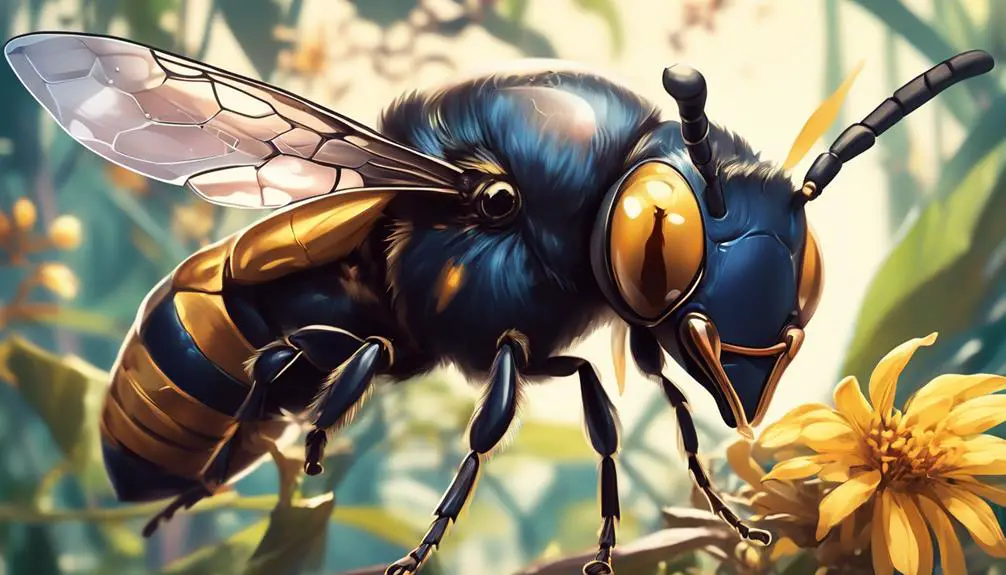
When it comes to identifying the Skinny Carpenter Bee, you'll notice its distinctive slender body, a key feature setting it apart from other, bulkier carpenter bee species. You'll observe its elongated abdomen, which is typically black or dark metallic blue, and its smaller size, usually ranging from 8 to 15 millimeters.
Though it lacks the robust build of its counterparts, don't underestimate the Skinny Carpenter Bee. It's a proficient flyer, nimbly darting about despite its light body mass. You'll see its wings, a translucent gray, beating rapidly and almost imperceptibly as it hovers around flowers.
Inspect its antennae and you'll find them longer, relative to body size, than those of other carpenter bees. This serves the dual purpose of enhancing its sensory perception and aiding navigation. Look closely at its mandibles; they're less powerful, correlating with its diet, which leans more towards nectar than wood.
You're likely to spot it in woodland and suburban areas, particularly around flowering plants, its primary food source. It's less destructive than larger species, rarely burrowing into wood for nests.
Documenting the Skinny Carpenter Bee requires keen observation, patience, and a discerning eye.
Lifespan and Reproduction Cycle
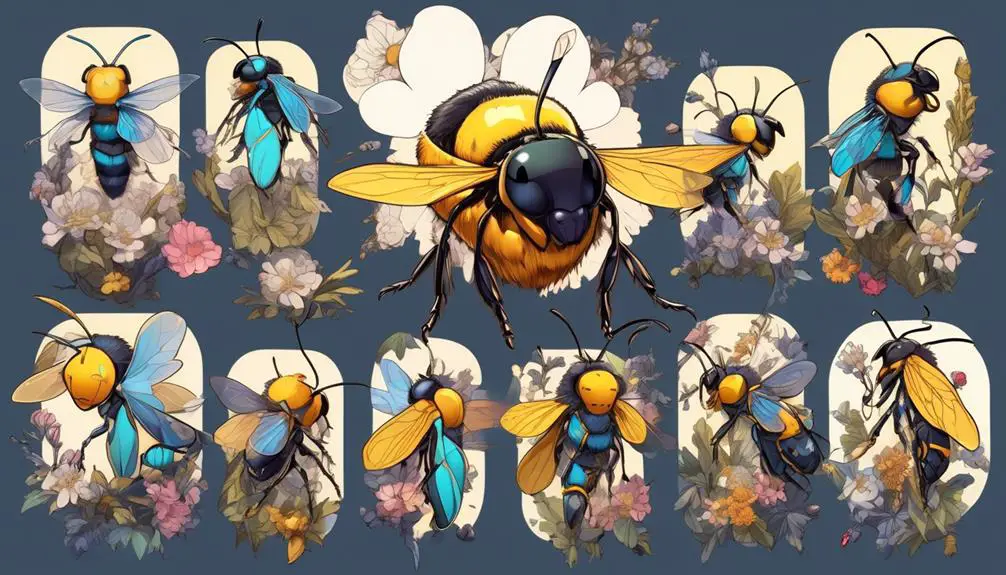
While you may find the physical attributes of the Skinny Carpenter Bee intriguing, its lifespan and reproduction cycle provide an equally captivating study. Typically, these bees live for one year, with their life cycle commencing in the spring. A mated female carpenter bee begins the cycle by boring into wood to lay her eggs.
Each egg is deposited in an individual cell, along with a provision of pollen and nectar. The female then seals the cell with chewed wood pulp. These cells serve as both nurseries and food stores for the developing larvae. After four to nine weeks, adult bees emerge, ready to start their own reproductive journey.
These new adults spend the remainder of the summer and fall preparing for the next generation, collecting nectar, and strengthening their bodies for the winter hibernation. The cycle begins anew after winter ends, with the mated females laying eggs in the spring.
It's fascinating to observe how survival instincts drive the Skinny Carpenter Bee's life, ensuring it reproduces and prepares for the next generation within its short lifespan. This reveals nature's precision and the bee's remarkable adaptability.
Preferred Habitat and Distribution

Navigating through diverse landscapes, you'd likely find the Skinny Carpenter Bee in wood-rich environments, as they've a penchant for nesting in dead, softwood trees. These bees favor habitats like forests or woodlands, where they can easily access their preferred nesting sites. The availability of softwood trees such as pine, cedar, or cypress is essential for these creatures.
The distribution of Skinny Carpenter Bees is relatively wide and varied. They're commonly found in North America, particularly in the United States, where they're prevalent in the southeastern regions. However, their presence isn't restricted to this area. You'd also encounter them in select areas of South America, Asia, and Africa. The bees' distribution is largely influenced by climatic factors, with a preference for regions offering mild winters and long, hot summers.
Their adaptability is noteworthy, as it allows them to thrive in both urban and rural environments. Whether it's a city park with a handful of trees or a dense forest, the Skinny Carpenter Bee is likely to find a suitable home. Understanding their preferred habitat and distribution aids in ensuring their conservation, as habitat loss poses a significant threat to their survival.
Skinny Carpenter Bee's Diet
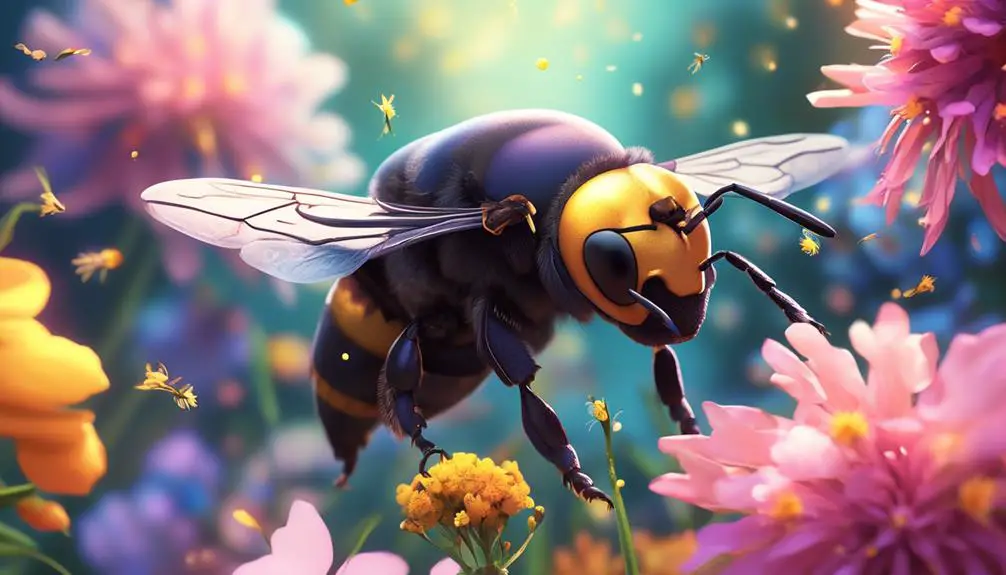
Diving into the culinary preferences of the Skinny Carpenter Bee, you'll find they sustain themselves primarily on a diet of nectar and pollen collected from a wide variety of flowering plants. These bees have a critical ecological role as pollinators, transferring pollen from the male anthers of a flower to the female stigma.
Interestingly, Skinny Carpenter Bees have a preference for certain types of plants. Their top choices seem to be flowering plants that have nectar with a high sugar content. They can also be found foraging at flowers that are rich in pollen.
Here's a snapshot of their main dietary sources, presented in table format:
Plant Type | Substance | Importance |
|---|---|---|
Flowering Plants | Nectar | High Sugar Content |
Flowering Plants | Pollen | Rich Protein Source |
Deciduous Trees | Sap | Occasional Intake |
Lastly, while they're not common sap consumers, they have been known to tap into the sap of deciduous trees when other resources are scarce. In conclusion, the Skinny Carpenter Bee's diet is diverse, adaptable, and plays a vital part in the ecosystem.
Importance in Ecosystem and Conservation Status
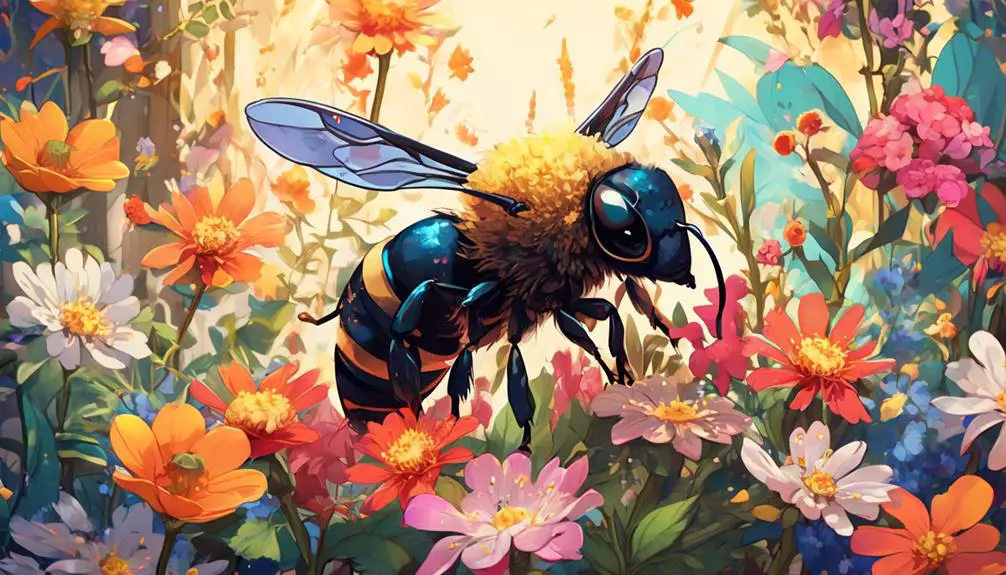
In examining the Skinny Carpenter Bee's significance in the ecosystem, you'll find that their role extends far beyond their dietary habits, having a profound impact on plant reproduction, biodiversity, and even the status of their conservation.
As primary pollinators, these bees play a pivotal role in the propagation of many types of plants. By moving pollen from the male anthers of a flower to the female stigma, they facilitate fertilization and subsequent seed production. This reproduction is essential for plant diversity and ecosystem health.
Moreover, these bees' presence or absence can serve as a bioindicator, providing insight into the health of an ecosystem. Their decline or disappearance may indicate a disrupted ecosystem, due to factors such as habitat loss or pesticides. Therefore, conservation of Skinny Carpenter Bees directly correlates with environmental preservation.
Currently, these bees' conservation status isn't critically endangered, but they're under constant threat due to anthropogenic activities. Conservation efforts must focus on preserving their habitats, controlling pesticide use, and educating the public about their importance. Your role, too, is crucial, whether through creating bee-friendly gardens or supporting related conservation initiatives.
Conclusion
So, you've learned about the skinny carpenter bee. They're unique, living for a few years and playing a crucial role in our ecosystems. They're found in various habitats and feed mainly on nectar.
Despite their importance, they're often overlooked in conservation efforts. Understanding these bees helps us appreciate biodiversity and highlights the need for their protection.
Keep an eye out for these fascinating creatures, their existence is a testament to nature's remarkable diversity.

